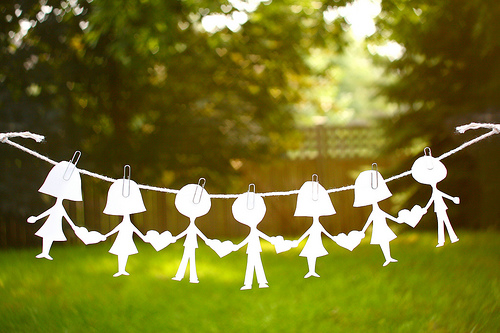Social networks shouldn’t just be a bolt on
A short and snappy update today but one I hope will spark some creative ideas. I’ll go into more detail around this in a later post and am more than happy to answer questions. (Also part 3 of the Facebook guide is on the way, this one just needs more research).
Plugins don’t equal social
A lot of businesses are thinking around social networks in the wrong way. They see the plugins that the various platforms have and they think that is the way to make their product/website social. The reality is this couldn’t be further from the truth. As Paul Adams says this is just a way to “bolt on” social but isn’t truly social. It takes advantage of a small part of these new mediums and although can result in some good results it often is not enough.
Think differently
The web is being rebuilt around each and everyone of us in a natural evolution for it to reflect our offline world. Whether you like it or not that is what is happening and it is going to be largely based around the social networks that hold the most information about us.
There is a necessity to begin to understand human behaviour because of this. It is no longer a case of “build it and they will come” as content is not the be all and end all of the web. By having the knowledge of what makes humans tick, understanding fundamental human social behaviour you will be one step ahead of your competition when it comes to implementing the social networks out there into your game.
Examples
A prime example of a company who looked at human behaviour, took the data available to them through, in this case, Facebook and are currently reaping the rewards is Zynga. Although we are yet to see how they will do on the stock market it is safe to say that they will be a force to be reckoned with in the near future. By implementing the simple basic idea of playing alongside your friends and taking advantage of the Facebook platform, they have created a company that has more players in one game than the total who bought Call of Duty: Black Ops. The games don’t look as pretty and don’t have anywhere near as many features but people are compelled to keep playing and to join their friends online.
A slightly different example, but a great one showing how to customise around an individual, is the online craft shop Etsy. They use the data available from your Facebook account to pull in all your friends likes to be able to accurately predict gifts which they’ll most likely be interested in. This simple but effective mechanic immediately makes the shopping for a gift experience more enjoyable and effective.
Be creative
Facebook, Twitter, Google+, Linkedin, Instagram, Foursquare, YouTube and even Soundcloud offer a wealth of data that you can use to make your game more relevant to an individual. By making an experience that directly engages with a person makes them more likely to want to come back for more and share that experience with those they are closest to.
Don’t over step the mark
When looking into what piece of information you want to pull into the experience make sure that what you choose isn’t going to freak people out. Do you really need to known “Relationship status”? If you do then fine but make it 100% clear.
Finally don’t store people’s profiles. It scares people and is a PR headache.
I highly recommend you watch the below video to get a better understanding of what I am talking about. Hopefully you will begin to see new and exciting ways to build games around people rather than trying to shoe horn social into your game.
P.s. One day soon I hope we can just talk about the web rather than saying social every five words.
